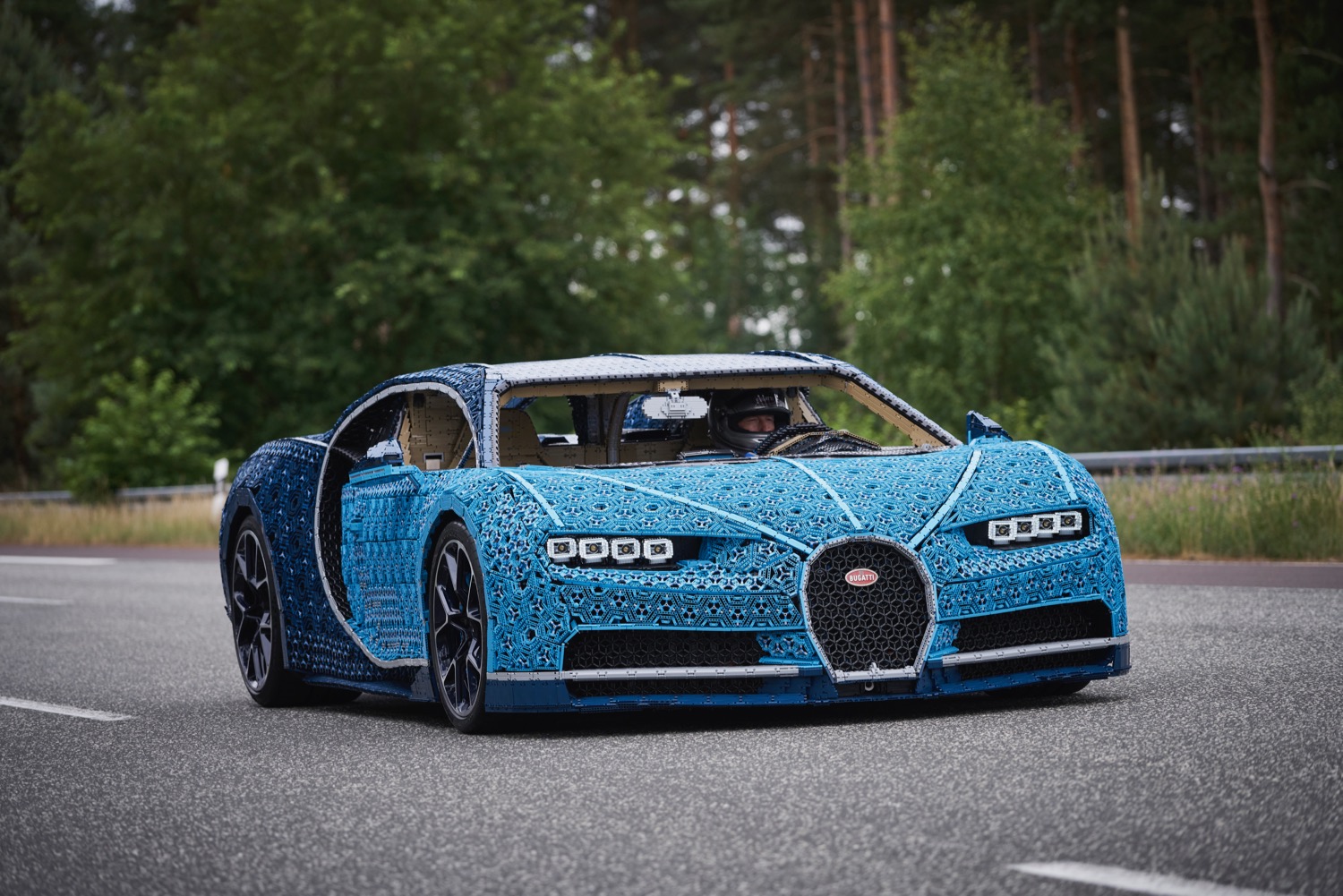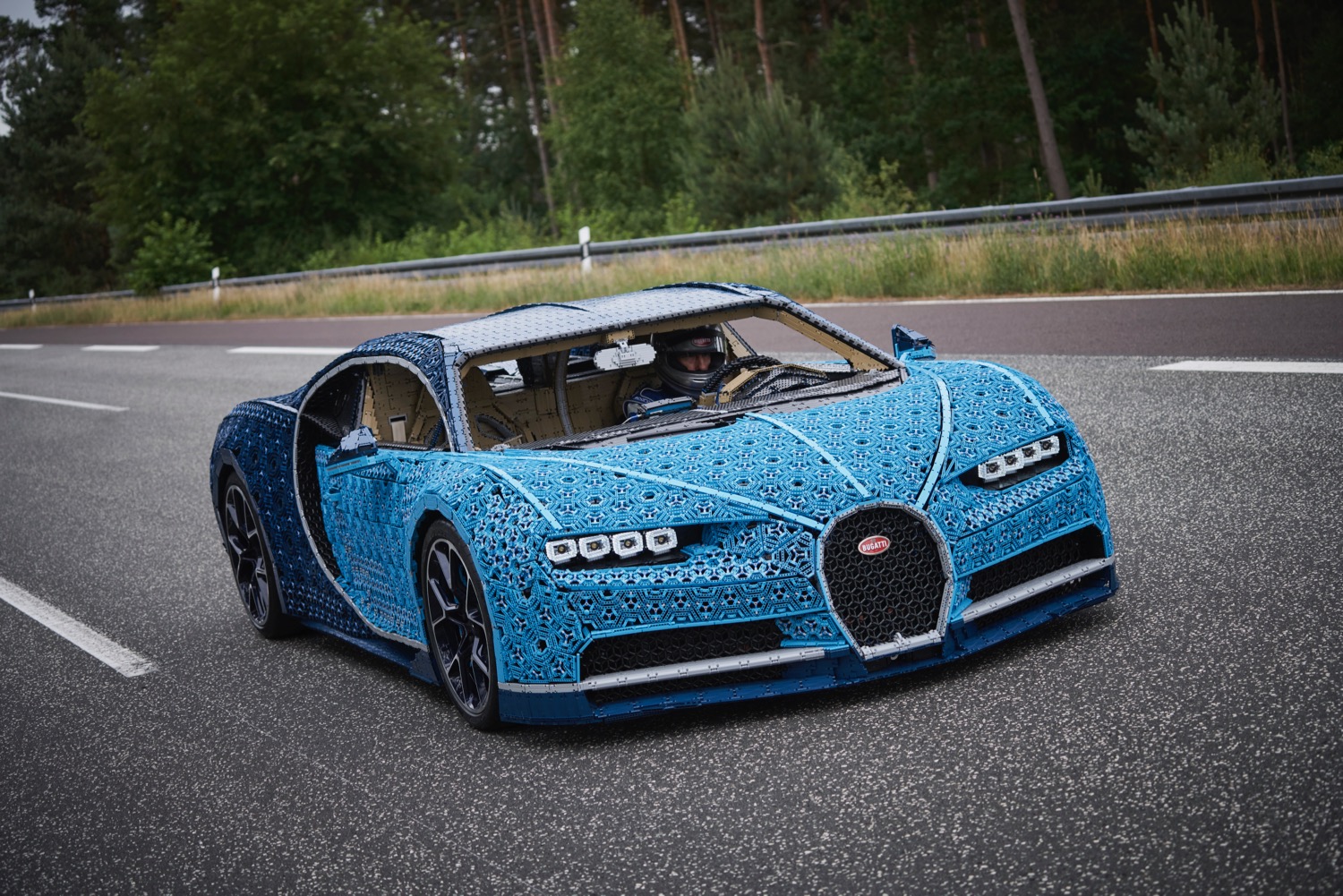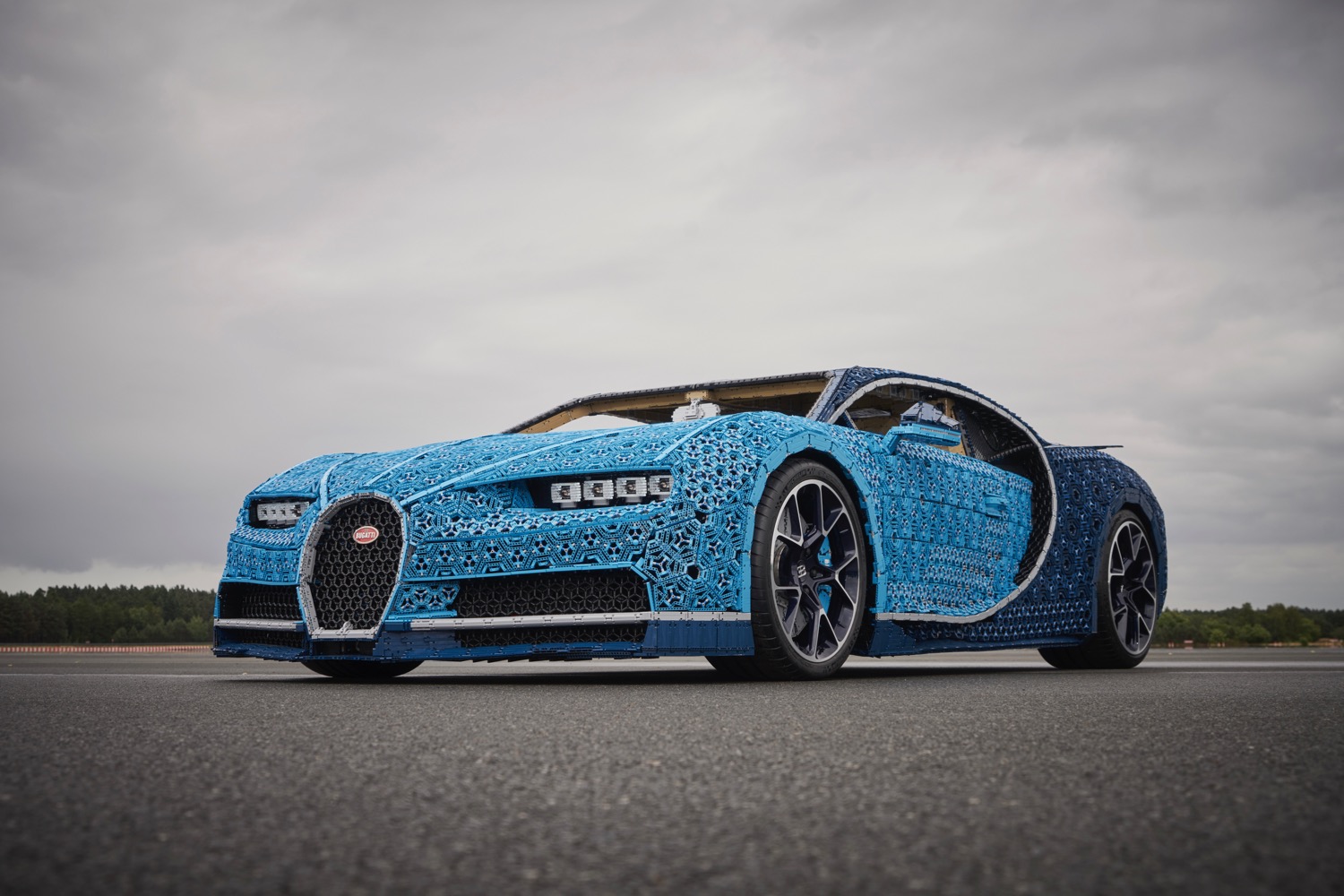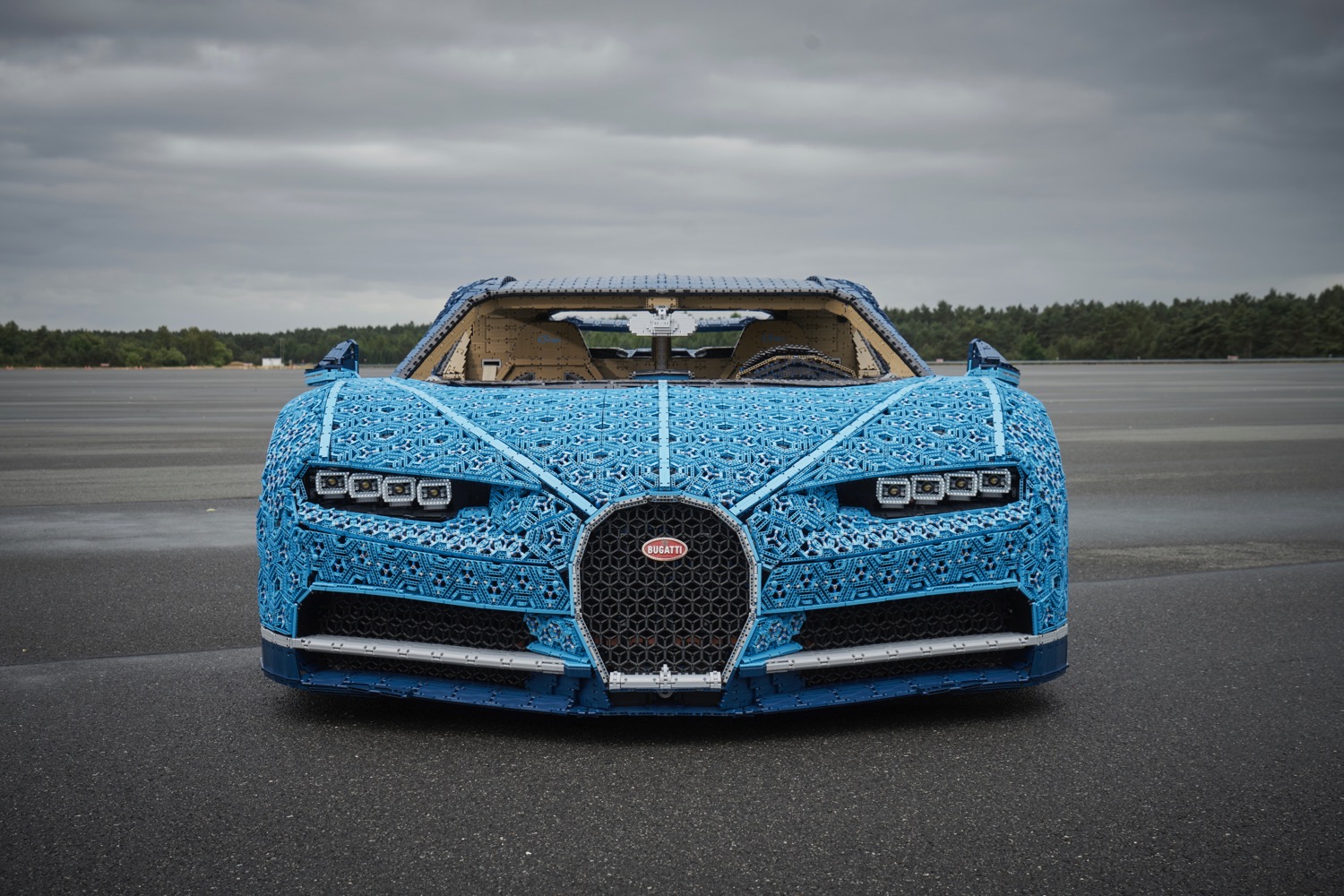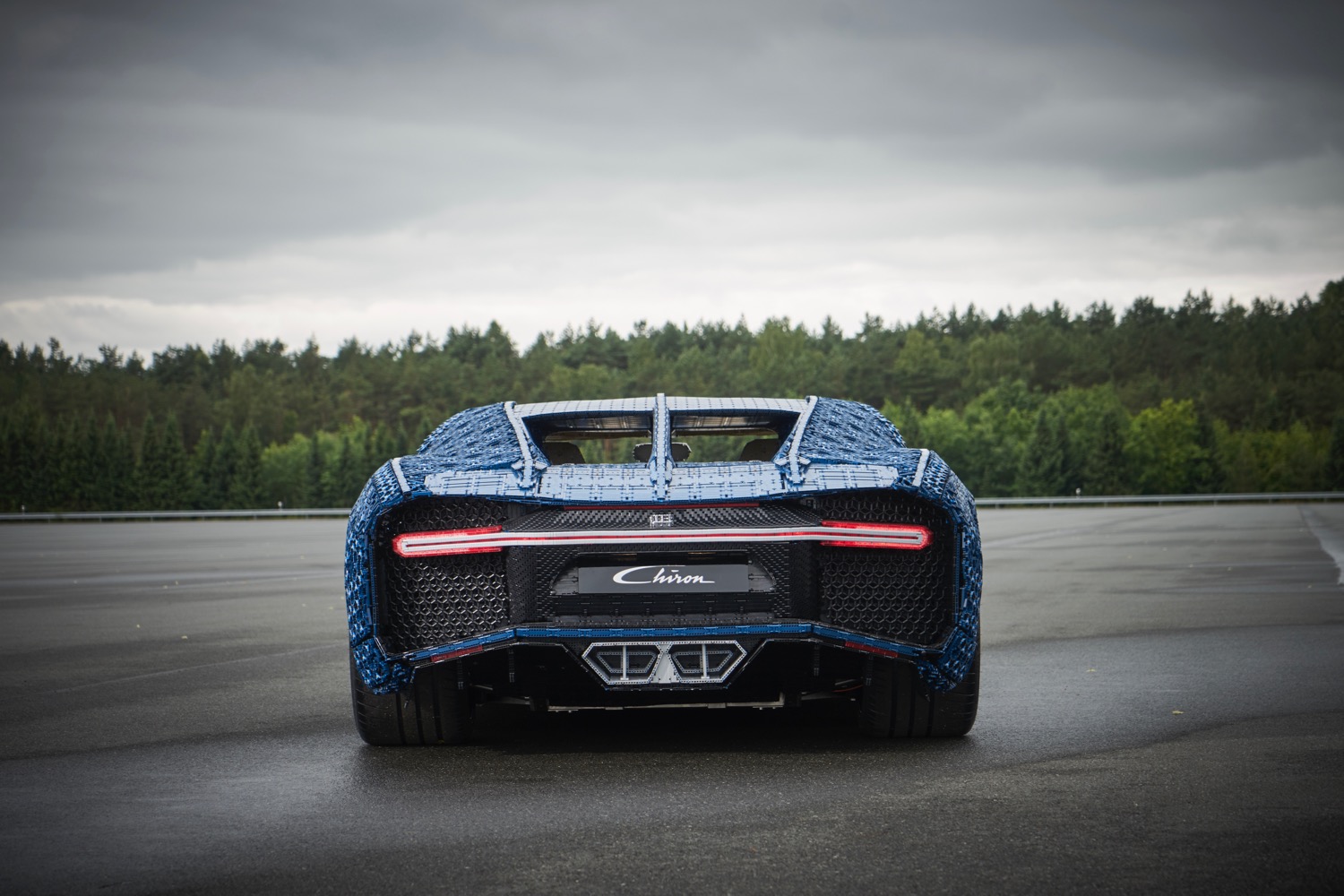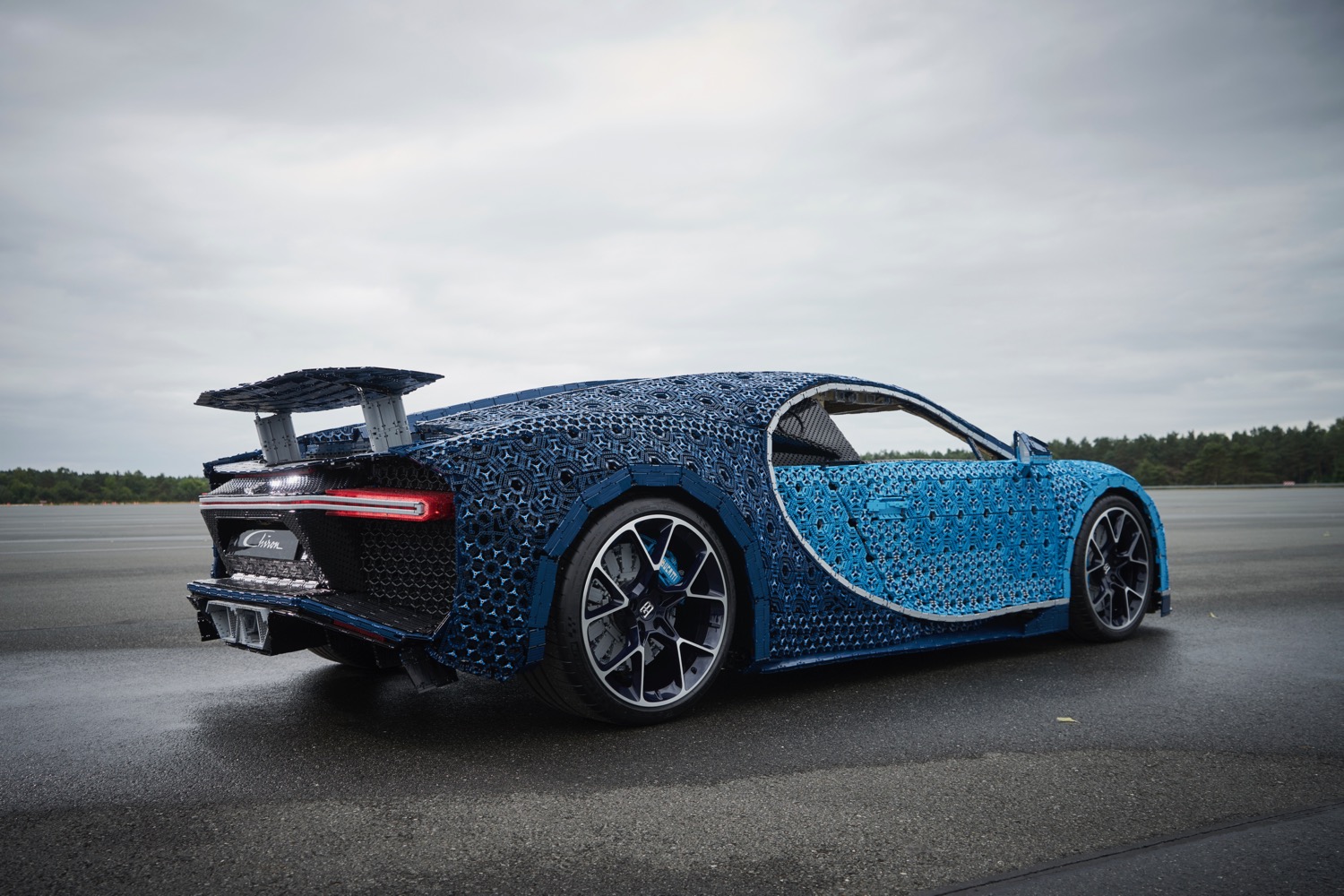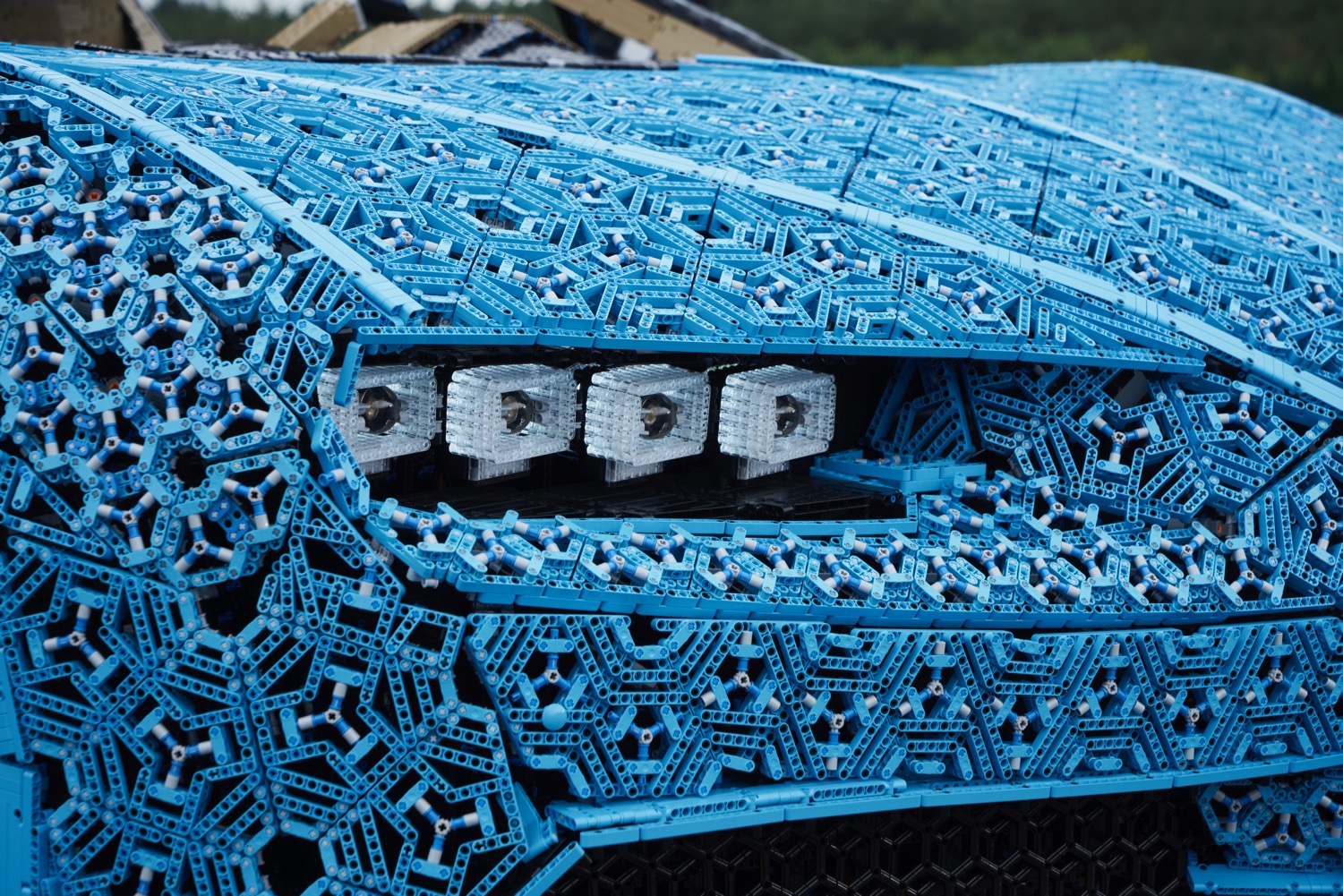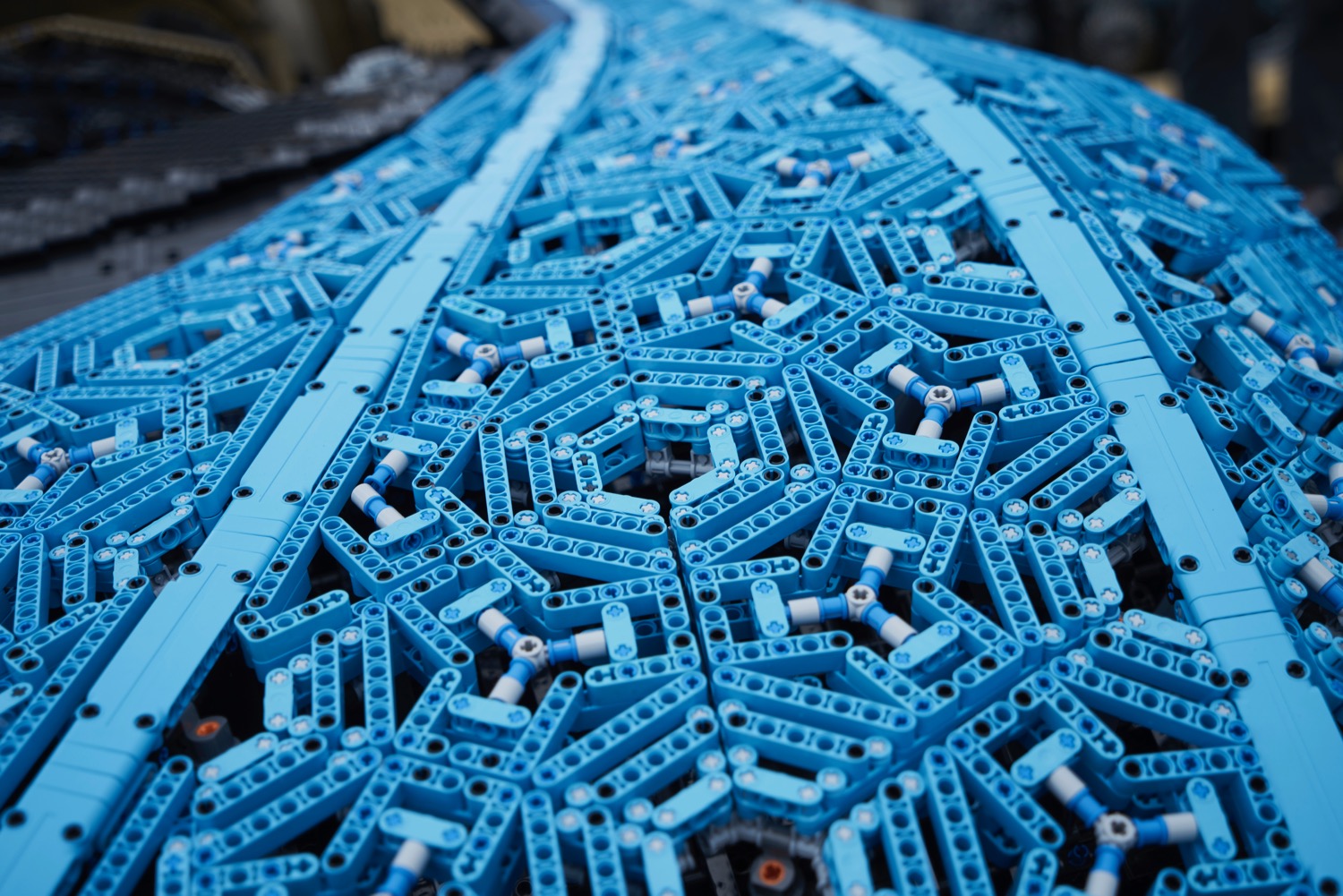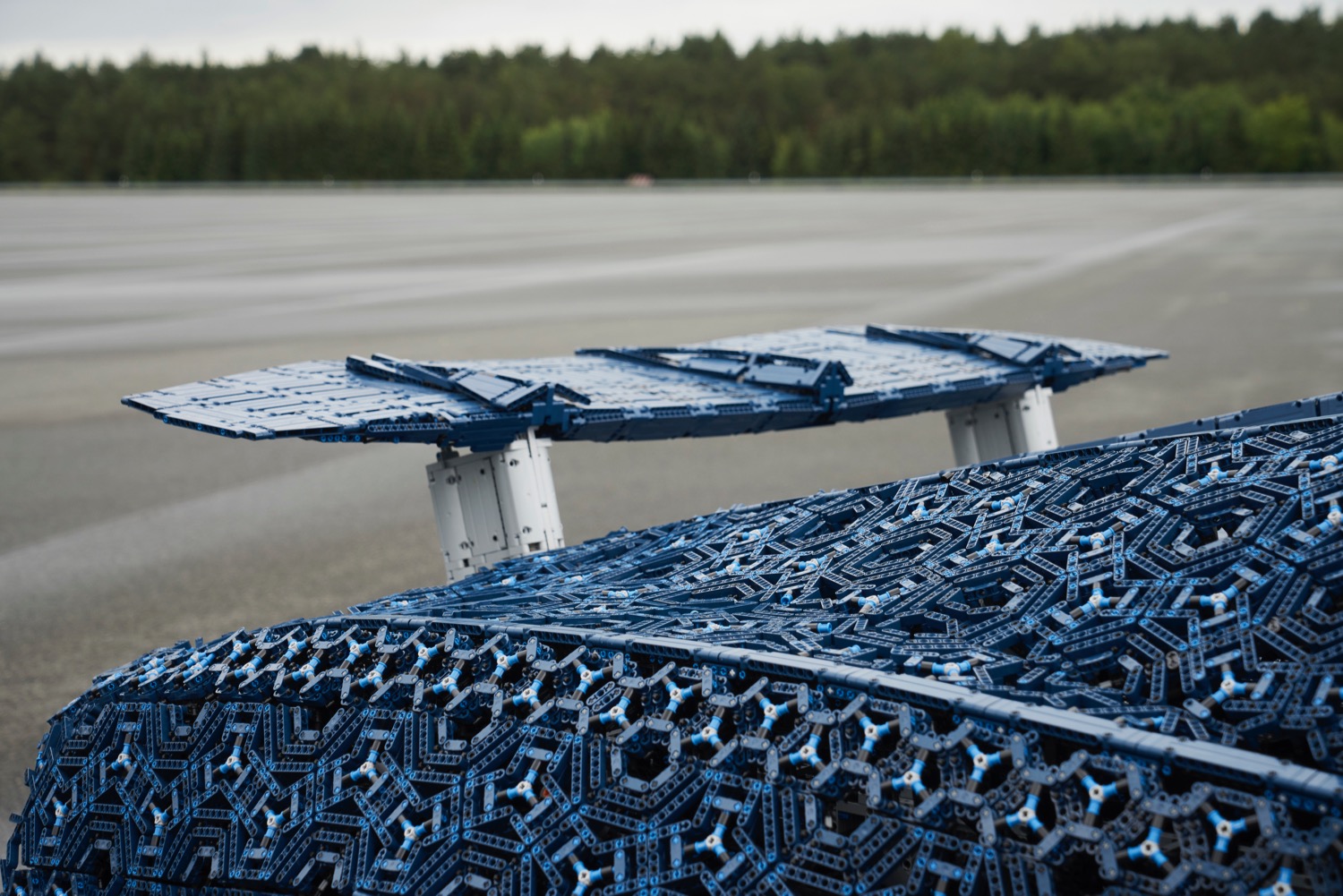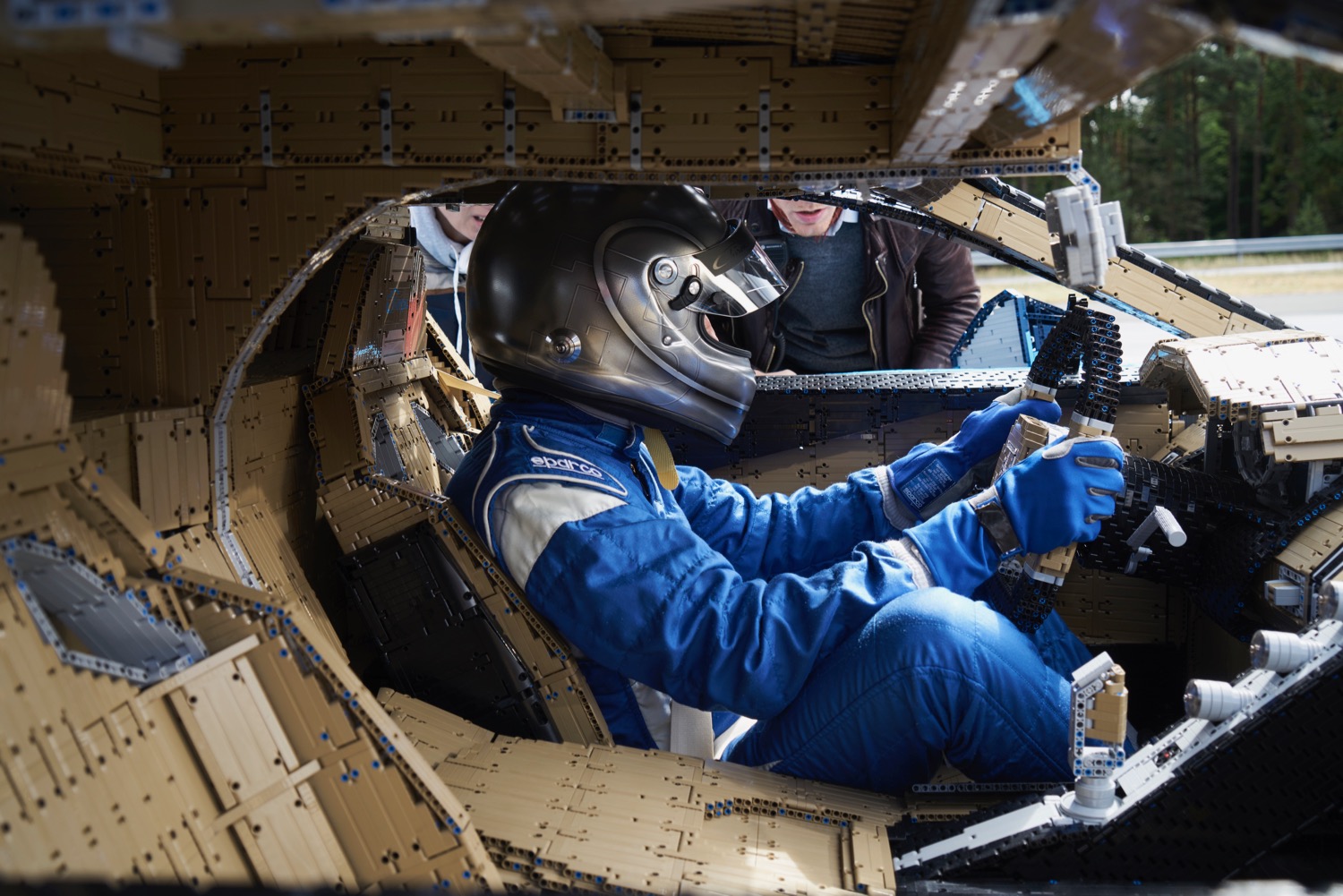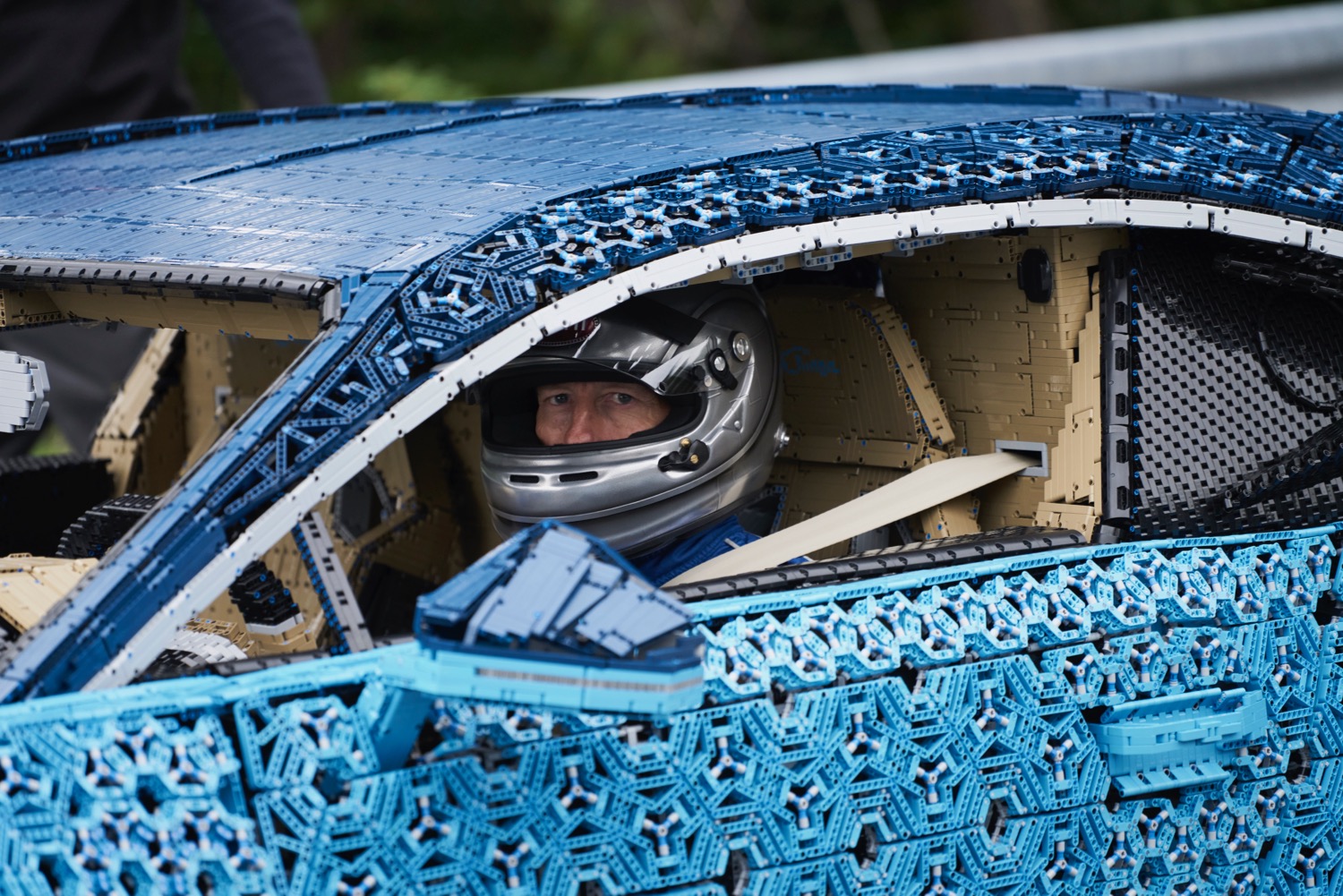The folks at Lego seem to have a passion for supercars. Lego unveiled a life-size McLaren 720S made from 280,000 bricks at the 2017 Goodwood Festival of Speed. Now Lego is following that up with a Bugatti Chiron model that is not only life size, but also drivable. It makes its public debut at the Formula One Italian Grand Prix in Monza August 30.
The Bugatti is made from over 1 million Lego Technic pieces, and took over 13,000 work hours to build, according to Lego. It’s powered by electric motors from the Lego Power Function toy line. Those motors aren’t meant to power something this big, so don’t expect the kick of a real Chiron’s 8.0-liter quad-turbocharged W16 engine. Even with 2,304 motors connected by 4,032 gear wheels, the Lego Chiron only has 5.3 horsepower and 67.8 pound-feet of torque, compared to 1,500 hp and 1,180 lb-ft in the real thing.
While Lego’s non-drivable McLaren 720S was substantially heavier than the real car, the 1.6-ton Lego Chiron may actually be a bit lighter than the genuine article. Nonetheless, we don’t expect the Lego car to be able to match Bugatti’s performance claims for the real Chiron. The automaker has promised 0 to 60 mph in under three seconds, and a top speed high enough to secure the title of world’s fastest production car.
It may not be able to move fast (top speed is 12.4 mph), but it can be driven like a real car. It has a complete interior — including seats and a steering wheel — made entirely of Lego. The outer skin is made of triangular elements interlinked to mimic a smooth surface, at least when viewed from a distance. The car also sports working lights, a rear spoiler, and a speedometer.
To prove that its Chiron replica is no mere static display, Lego took it to Volkswagen’s Ehra Lessien test track in Germany, where the real Chiron was developed. At the wheel was 24 Hours of Le Mans-winning racing driver and Bugatti brand ambassador Andy Wallace.
“Driving the Lego Chiron was a great experience, which I thoroughly enjoyed,” Wallace said in a statement. “All those years ago I could never have imagined that one day I would actually drive a Lego car!”
Don’t expect Lego to start selling life-size Chiron kits anytime soon, but the company does offer a 1/8-scale version that retails for $350. Bugatti just unveiled a sharper, reengineered version of the Chiron called the Divo; we expect it won’t be long before that car is remade in Lego, too.

